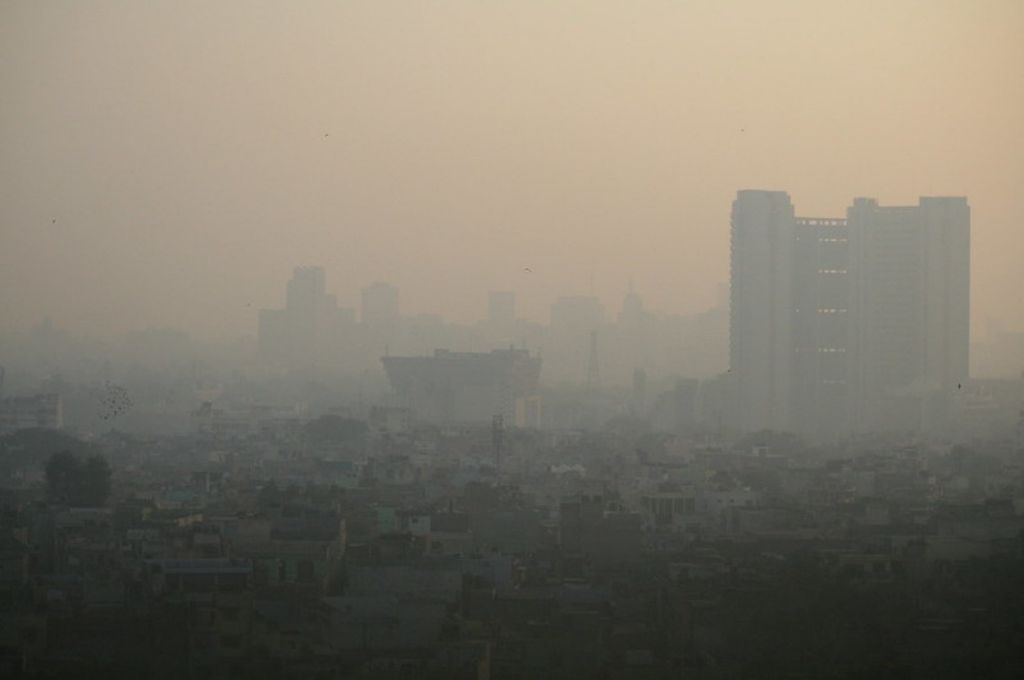Air pollution is a global public health crisis, and air pollution levels in India are among the highest in the world, posing a heavy threat to the country’s health and economy. According to the 2019 World Air Quality Report, India is home to 21 of the 30 most polluted cities in the world. In these cities, air quality can be as much as 10 times over the safe limits of air pollution recommended by the WHO.
Why is air pollution such a significant issue?
Loss of life
According to the State of Global Air 2020 report, air pollution was the fourth leading risk factor for early death worldwide in 2019, and is estimated to have caused 1.7 million premature deaths in India in that year. The burden of disease due to air pollution is higher in low- and middle-income countries, causing about 91 percent of premature deaths.

Economic losses
While the hazardous impact of air pollution on health is well recognised, its negative economic impact is less investigated. Lost output from premature deaths and morbidity attributable to air pollution accounted for economic losses of USD 28.8 billion and 8 billion respectively in 2019. In India, economic losses from air pollution were equivalent to 1.36 percent of the country’s GDP.
Why are children at higher risk?
According to a WHO report, every day around 93 percent of the world’s children under the age of 15 years breathe air so polluted that it puts their health and development in serious danger. Children are at greater risk than adults from the many adverse health effects of air pollution owing to a combination of behavioural, environmental, and physiological factors. Some key reasons for this higher risk include:
- Children are more susceptible because their lungs, brain, and immune system are still developing and their respiratory tract is more permeable.
- Children breathe more air per kilogram of body weight, so their exposure to air pollution is much greater than adults. The consequences of their exposure—through inhalation, ingestion, or in utero—can lead to illness and other lifetime health burdens.
What are the effects of air pollution on children’s health and development?
Air pollution is one of the leading threats to child health, globally accounting for almost one in 10 deaths in children under five years of age. Around 8.8 percent of deaths in children under the age of five in India in 2017 can be attributed to air pollution, according to a Lancet study. Some of the effects on children’s health and development include:
1. Serious respiratory illnesses
Air pollution causes more than 50 percent of acute lower respiratory infections in children under five years of age in low- and middle-income countries. It can lead to asthma, childhood cancers, chronic diseases, poor lung function, pneumonia, and other types of acute lower respiratory infection.
This study from Delhi observed a statistically significant positive association between air pollution (PM10 level) and the prevalence of lower respiratory tract symptoms. These symptoms were more prevalent in girls than in boys. Every third child in Delhi has impaired lungs due to the high level of pollutants that are present in the city’s air.
2. Premature births, infant deaths, and a negative impact on child growth
Pregnant women exposed to polluted air are more likely to give birth prematurely and have small, low birth-weight children. A recent study from India revealed a negative impact of exposure to air pollution during the first trimester of pregnancy on child growth indicators.
Air pollution contributed to nearly 5,00,000 infant deaths worldwide in 2019. In India, a fifth of neonatal deaths from all causes can be attributed to air pollution.
This Lancet study indicates a plausible link between air pollution and stunting in children.
3. Negative impacts on children’s neurodevelopment
Prolonged exposure to polluted air negatively impacts neurodevelopment in children. According to the WHO, new research has shown an association between prenatal exposure to high levels of air pollution and developmental delay at age three, as well as psychological and behavioural problems later on, including symptoms of attention deficit hyperactivity disorder, anxiety, and depression. Air pollution affects children’s learning process by exacerbating respiratory illnesses, fatigue, school absenteeism, and attention problems.
What is the way forward?
India has taken the following steps at the central and state levels to control pollution and improve air quality:
1. National Clean Air Programme
Government of India’s National Clean Air Programme is a powerful step in acknowledging and resolving the problem of deteriorating air quality. It is a national-level strategy to tackle the country’s air pollution challenge, calling for a 20–30 percent reduction in particulate matter pollution by 2024.
2. Performance-based funds transfers to cities
In 2020, the central government allocated approximately USD 1.7 billion to fight air pollution in 42 Indian cities that have a population of more than one million. This is conditional on these cities reducing their air pollution levels by 15 percent every year. It is the world’s first performance-based fiscal transfer funding programme for air quality management in cities.
3. Coordinated action to improve air quality
Parliament approved a law in August 2021 to establish the Commission of Air Quality Management for better coordination, research, identification, and resolution of problems related to air quality in the National Capital Region and adjoining areas.
However, much more needs to be done. The air pollution challenge in India is inherently multisectoral. Policies and investments supporting cleaner transport, power generation and industry; energy-efficient homes, and better municipal waste management will reduce key sources of outdoor air pollution. Experiences in tackling air pollution in cities suggest three possible ways forward:
- Disseminating information about the problem and health risks.
- Providing incentives to cities/states and other stakeholders for tackling air pollution.
- Building institutions that support air quality management. This requires sufficient funding and a sustained focus on capacity building.
The right combination of political will, appropriate implementation, and a strong compliance mechanism from both government and the private sector are required to move forward. Given Prime Minister Narendra Modi’s recent announcement that India aims to achieve net-zero carbon emissions by 2070, the time to act is now.
—
Know more
- Learn about how donors can support the fight against air pollution.
- Explore this emissions inventory that provides information on the sources of air pollution in India.
Do more
- Check the air quality in your area on the Central Pollution Control Board’s National Air Quality Index or view the air quality across India here.



